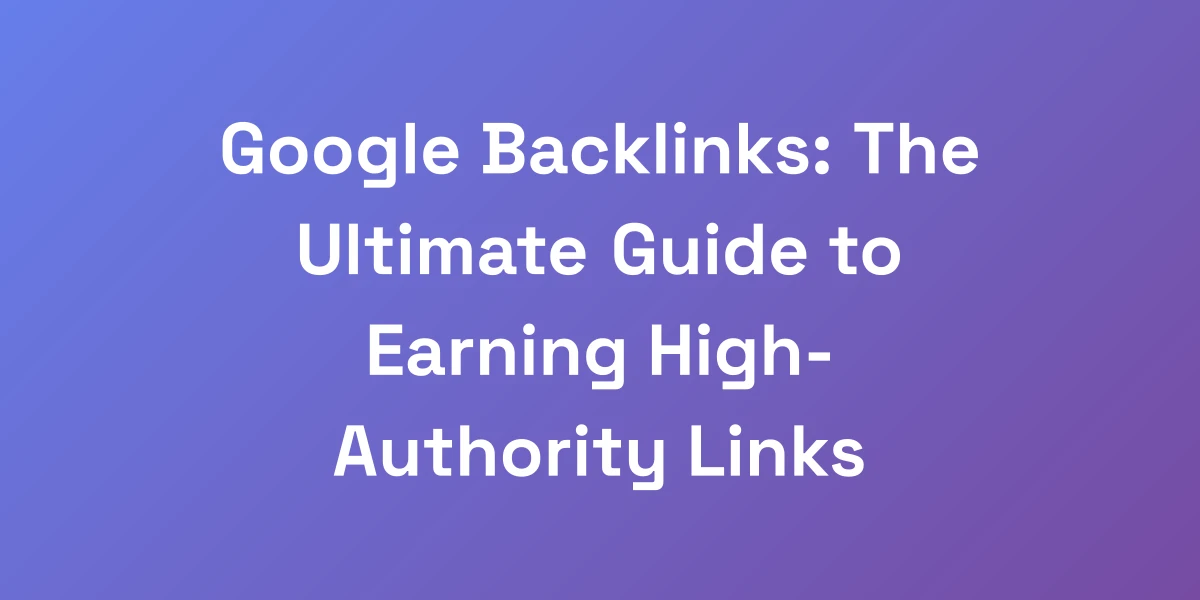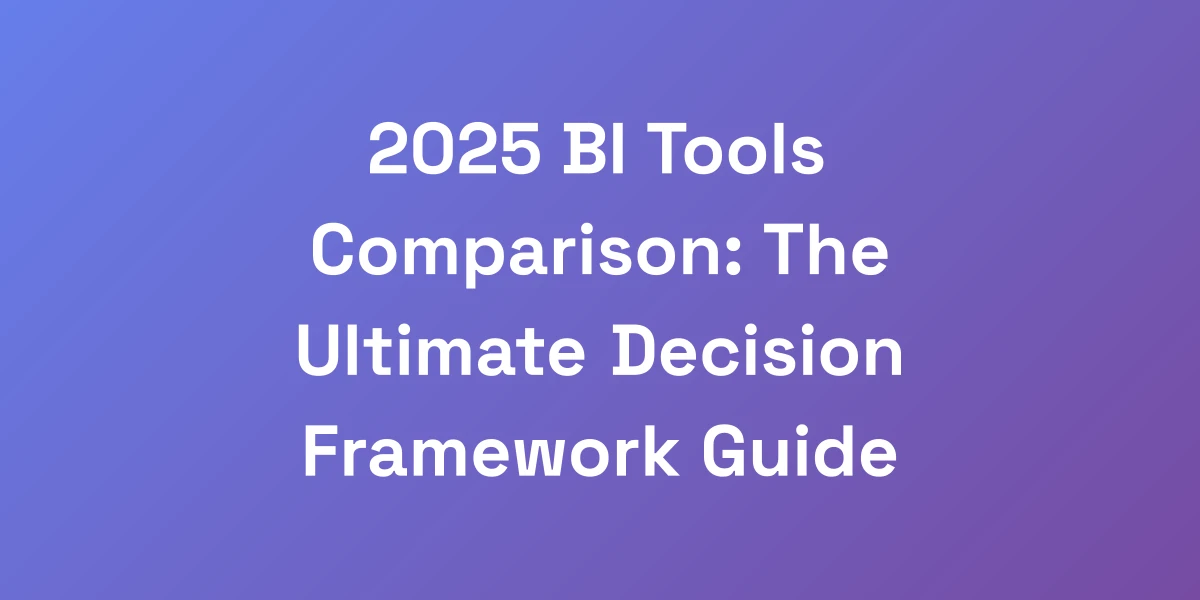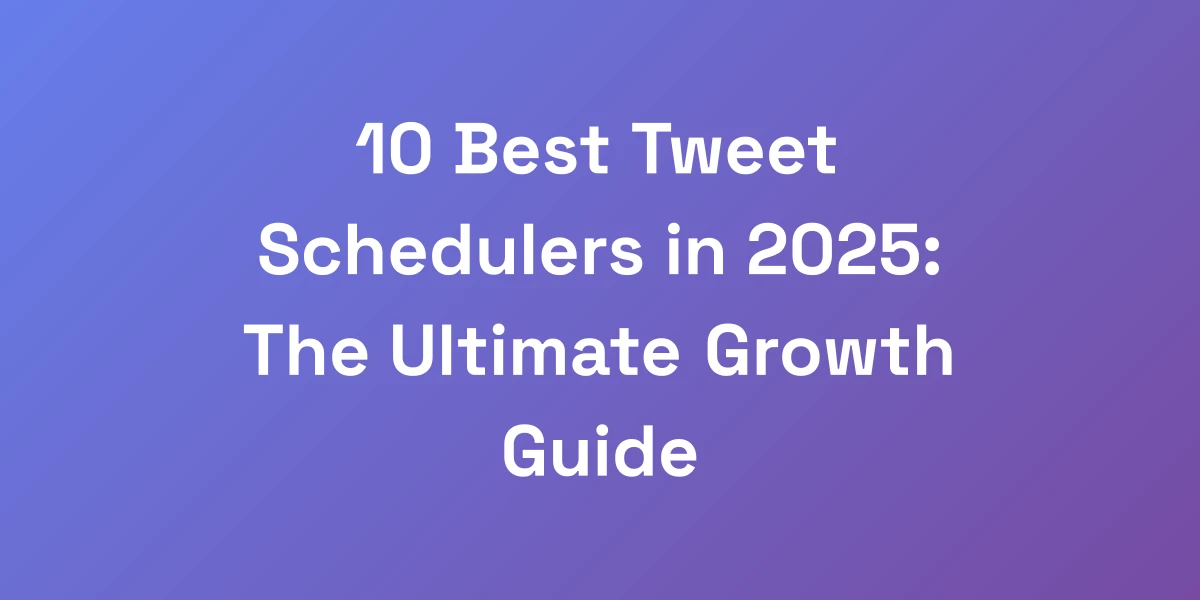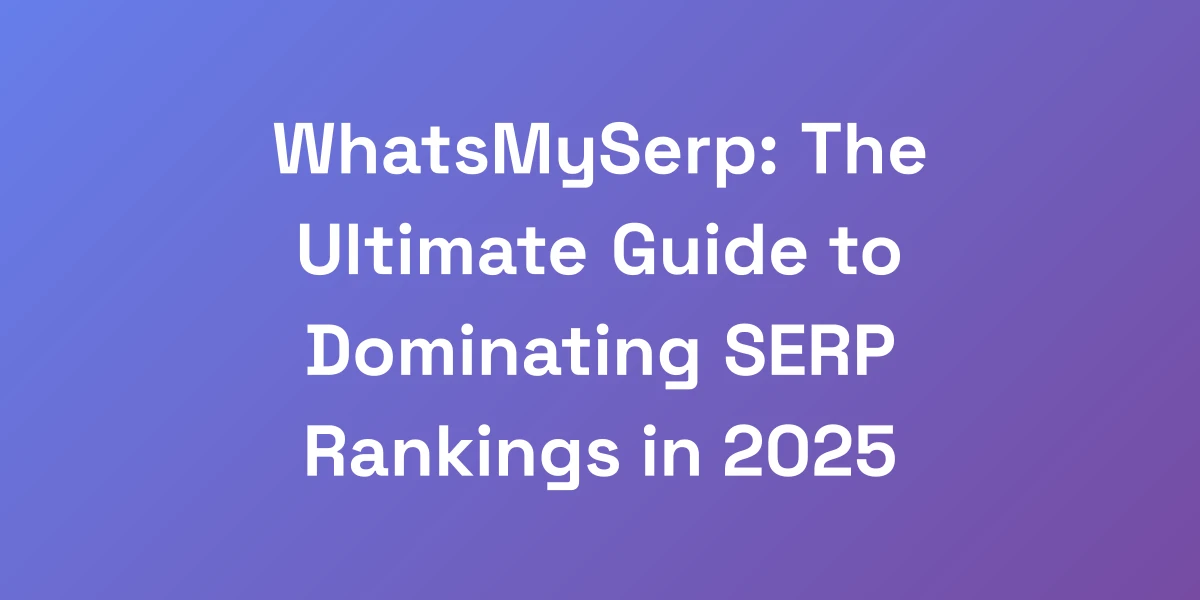
Backlinks Disavow: The Ultimate Guide to Removing Toxic Links (2025)
Apr 11, 2025 | By [email protected]
Ever felt like your website is hemorrhaging visitors? Like no matter how much you optimize, something unseen is dragging your rankings down? You’re not alone. In the ruthless arena of SEO, toxic backlinks are the hidden enemies most website owners never see coming.
Imagine building your digital empire, only to have silent saboteurs tearing it down brick by brick. Frustrating, right? The challenge isn’t just about acquiring backlinks anymore; it’s about identifying and eliminating the ones that harm your site’s credibility. But fear not. We’re here to walk you through the ultimate strategy to cleanse your backlink profile and reclaim your SEO dominance.
Ready to dive deep into the mechanics of backlink disavowal? Let’s get started.
Why Most Websites Are Secretly Killing Their SEO with Bad Backlinks
Let me hit you with some truth that most “SEO gurus” won’t tell you: your backlink profile could be a ticking time bomb. I’ve seen countless businesses tank their rankings because they either ignored toxic backlinks or went crazy with the disavow tool. Here’s the reality – every single backlink pointing to your site is either pushing you up or pulling you down. There’s no middle ground.
And in today’s cutthroat SEO landscape, you can’t afford to let bad links destroy your digital real estate. But here’s the good news: we’re going to show you exactly how to identify and eliminate these toxic links like a surgeon.
The Hidden Cost of Toxic Backlinks
Toxic backlinks aren’t just minor nuisances; they’re silent killers. They can erode your site’s authority, leading to diminished search engine trust. When your backlink profile is riddled with low-quality or spammy links, Google’s algorithms take notice.
- Reduced Search Rankings: Toxic backlinks can cause significant drops in your SERP positions.
- Decreased Traffic: Lower rankings mean fewer visitors finding your site organically.
- Loss of Credibility: Users associate high-ranking sites with authority and trustworthiness.
Consider this: an online retailer with numerous low-quality backlinks might see a spike in penalties, leading to a direct drop in sales and visibility.
Common Types of Harmful Backlinks
Not all backlinks are created equal. Some types are inherently more dangerous than others. Let’s break down the most common culprits:
- Spammy Blog Comments: Links from irrelevant or low-authority blogs.
- Low-Quality Directories: Links from directories that exist solely for link building.
- Private Blog Networks (PBNs): Networks of sites created to artificially inflate backlink profiles.
- Link Farms: Groups of websites that all link to each other to manipulate search rankings.
- Over-Optimized Anchor Text: Excessive use of exact-match keywords in anchor texts.
Each of these link types sends negative signals to search engines about the integrity and authenticity of your site’s backlink profile.
Recent Google Algorithm Updates and Their Impact
Google’s algorithms are in a perpetual state of evolution, constantly refining how backlinks are evaluated. Since the Penguin update in 2016, Google has shifted from site-wide penalties to more nuanced, link-specific actions.
- SpamBrain AI: An AI-powered system that detects and disregards low-quality backlinks automatically.
- Granular Link Assessment: Algorithms now assess backlinks on a case-by-case basis rather than punishing entire sites.
- Enhanced Relevance Metrics: Greater emphasis on the contextual relevance of backlink sources.
These updates mean that while isolated toxic backlinks might not cause immediate harm, patterns of manipulative linking can still trigger penalties.
Signs Your Website Is Under Attack from Bad Links
How do you know if your site is being dragged down by toxic backlinks? Here are the warning signs to watch out for:
- Sudden Drop in Rankings: A noticeable decline in your SERP positions can indicate a problem.
- Decrease in Organic Traffic: Less traffic despite consistent or improved content efforts.
- Manual Penalty Notifications: Google notifies you of unnatural links pointing to your site.
- Unusual Backlink Patterns: A surge in low-quality or irrelevant backlinks.
If you’re experiencing these issues, it’s time to take action and audit your backlink profile.
The Real ROI of Clean Backlink Profile
Investing time and resources into maintaining a clean backlink profile pays dividends in the long run. Here’s why:
- Improved Search Rankings: Cleaner backlinks enhance your site’s authority and trustworthiness.
- Increased Organic Traffic: Higher rankings lead to more visibility and visitors.
- Enhanced User Trust: A reputable backlink profile builds credibility with your audience.
- Long-Term SEO Health: Prevents future penalties and maintains consistent performance.
Think of your backlink profile as your site’s reputation on the web. A pristine profile attracts more opportunities, while a tainted one repels potential growth.
The Science Behind Google’s Disavow Tool (And Why Most People Use It Wrong)
Listen up, because this is where 90% of website owners mess up. The disavow tool isn’t just some random feature Google threw out – it’s a powerful weapon that requires surgical precision. Think of it as chemotherapy for your website: used correctly, it eliminates the cancer of toxic backlinks; used wrongly, it can kill your healthy links too.
We’ve personally helped businesses recover from Google penalties, and we can tell you that understanding the mechanics behind the disavow tool is what separates the amateurs from the pros. Let us show you exactly how this tool works and why timing is everything.
How Google Actually Processes Disavow Files
When you submit a disavow file, Google takes it as a signal that you’d like certain backlinks to be ignored when assessing your site. Here’s the breakdown:
- File Submission: You upload a plain text file listing the URLs or domains you want to disavow.
- Processing by Google: Google’s algorithms re-evaluate your backlink profile, excluding the disavowed links from ranking signals.
- Reassessment: Over time, Google adjusts your site’s authority based on the remaining backlinks.
It’s crucial to ensure that only harmful links are disavowed, as incorrectly listing healthy backlinks can inadvertently reduce your site’s authority.
The Psychology Behind Link Penalties
Google’s approach to link penalties is systematic and based on maintaining the integrity of its search results. The goal is to present users with the most relevant and trustworthy content.
- Quality Over Quantity: It’s not just about the number of backlinks but the quality and relevance.
- Pattern Recognition: Google’s algorithms detect unnatural link patterns that suggest manipulation.
- Contextual Relevance: Backlinks from relevant, authoritative sites carry more weight.
Understanding this helps in identifying which links harm your SEO and deserve disavowal.
When to Use (and Not Use) the Disavow Tool
The disavow tool is a double-edged sword. Use it only when necessary, and here’s how to determine that:
- Use It When:
- Your site has a significant number of toxic backlinks.
- You’ve received a manual penalty from Google due to unnatural links.
- Automated algorithms aren’t sufficiently ignoring the harmful links.
- Don’t Use It When:
- Google’s algorithms are already handling the bad links effectively.
- You have only a few irrelevant or low-quality backlinks.
- You’re unsure about the quality of your backlinks and haven’t conducted an audit.
Using the disavow tool indiscriminately can harm your site’s SEO, so it’s imperative to proceed with caution.
Common Disavow Mistakes That Tank Rankings
Many website owners shy away from the disavow tool out of fear of making costly mistakes. Here are the pitfalls to avoid:
- Over-Disavowing: Disavowing too many links, including good ones, can reduce your backlink diversity.
- Ignoring the Root Cause: Failing to address why you have toxic backlinks in the first place.
- Incorrect Formatting: Errors in the disavow file can lead to Google ignoring your requests.
- Lack of Monitoring: Not tracking the impact of your disavow efforts on your SEO performance.
By being aware of these mistakes, you can use the disavow tool effectively without jeopardizing your site’s SEO health.
Case Studies: Successful Disavow Campaigns
Real-world examples can provide invaluable insights into the disavow process. Let’s explore how businesses have turned their SEO fortunes around:
- Case Study 1: Online Retailer
An online retailer faced a significant drop in PageRank due to low-quality backlinks. After a meticulous disavow campaign targeting spammy directories and irrelevant blogs, their PageRank steadily improved over several weeks, restoring their previous rankings and boosting organic traffic.
- Case Study 2: Travel Blog
A travel blog saw a decline in SEO credibility after accumulating backlinks from unrelated niches. By identifying and disavowing these harmful links, the blog not only recovered but also witnessed a notable increase in its domain authority and search rankings.
- Case Study 3: E-commerce Startup
A fledgling e-commerce site experienced lower organic traffic due to over-optimized anchor texts from low-quality sources. Implementing a strategic disavow process helped them cleanse their backlink profile, leading to improved search visibility and a surge in organic sales.
These examples underscore the transformative power of a well-executed disavow strategy.
The $100K Framework for Identifying Toxic Backlinks
I’m about to share the exact framework we use for our 7-figure clients to identify toxic backlinks for 2024 with near-perfect accuracy. Most people overcomplicate this process, but we’ve broken it down into a simple system that anyone can follow in under 60 minutes. This isn’t theory – it’s a battle-tested approach that’s helped businesses recover millions in lost revenue from Google penalties. The key is knowing exactly what signals to look for and how to prioritize which links to disavow first.
The 7-Point Toxic Link Checklist
To streamline the identification process, we use a 7-point checklist that pinpoints toxic backlinks:
- Relevance: Is the linking site related to your niche?
- Authority: Does the linking domain have high authority?
- Spam Score: Does the site score high on spam indicators?
- Link Type: Are the links editorial or manipulative?
- Anchor Text: Is the anchor text overly optimized?
- Traffic: Does the linking site have organic traffic?
- Content Quality: Is the linking site’s content high-quality and relevant?
Using this checklist ensures that no toxic link slips through the cracks.
Advanced Tools for Backlink Analysis
Arm yourself with the right SEO tools to conduct a thorough backlink analysis. Here’s what we use:
- Ahrefs: Exceptional for comprehensive backlink data and competitor analysis.
- SEMrush: Offers robust backlink auditing features and competitive insights.
- Moz Pro: Great for tracking domain authority and spam metrics.
- Majestic: Specializes in backlink history and link profile analysis.
- Google Search Console: Essential for monitoring your site’s backlink profile directly from Google.
These tools provide the analytics needed to identify and evaluate the quality of your backlinks effectively.
Manual vs. Automated Assessment
When it comes to assessing backlinks, there’s a balance between manual link building vs automation efficiency:
- Manual Assessment: Allows for in-depth analysis and nuanced judgment of link quality. Ideal for high-stakes backlinks where precision is paramount.
- Automated Assessment: Speeds up the process, making it feasible to handle large volumes of backlinks. Best used for initial filtering and identifying obvious toxic links.
Combining both methods offers a comprehensive approach, ensuring no toxic link is overlooked.
Risk Assessment Matrix
Prioritize your disavow efforts using a risk assessment matrix. Evaluate each backlink based on its potential harm and likelihood of triggering penalties:
- High Risk: Links from highly spammy sites with no relevance.
- Medium Risk: Links from low-authority sites or those with questionable content.
- Low Risk: Links that might be irrelevant but don’t pose a significant threat.
Focus your efforts on high and medium-risk links to maximize the effectiveness of your disavow strategy.
Priority Scoring System
Implement a priority scoring system to rank backlinks based on their toxicity:
- Score 10: Extremely toxic – immediate disavow needed.
- Score 7-9: Highly toxic – prioritize for disavowal.
- Score 4-6: Moderately toxic – monitor and consider if necessary.
- Score 1-3: Minimally toxic – typically can be ignored.
This scoring helps you systematically address backlinks, ensuring that the most harmful ones are tackled first.
The Step-by-Step Disavow Process That Actually Works
Stop everything you’re doing and pay attention, because this is where the rubber meets the road. We’re going to give you the exact process we use to disavow backlinks that’s generated consistent results across hundreds of websites. This isn’t your typical “create a text file and upload it” tutorial. This is a strategic approach that considers timing, sequence, and monitoring. The best part? You can implement this entire system in the next 24 hours and start seeing results within weeks.
Creating the Perfect Disavow File
A disavow file is your weapon against toxic backlinks. Here’s how to craft it perfectly:
- Start with a comprehensive list of all identified toxic backlinks.
- Separate URLs and domains. Use URLs for specific links and domains to exclude entire websites.
- Ensure the file is in plain text format with UTF-8 or 7-bit ASCII encoding.
- Use clear, consistent formatting – one URL or domain per line.
Example:
# Disavow Bad Links http://spammywebsite.com/bad-link domain:lowqualitydomain.net
Proper Formatting and Syntax
Formatting is crucial. Any errors can render your disavow file ineffective:
- No headers or comments at the beginning (except for lines starting with #).
- Use “domain:” prefix to disavow entire domains.
- List individual URLs without any prefixes.
- Save the file with a .txt extension.
Double-check for typos and ensure every entry follows the correct format.
Submission Best Practices
Submitting the disavow file correctly ensures Google processes it without issues:
- Access your Google Search Console account.
- Navigate to the Disavow Links tool.
- Select your website property.
- Upload your meticulously crafted disavow file.
- Confirm and submit.
Remember, submission isn’t instant. It takes time for Google to process and apply the changes.
Monitoring and Tracking Results
After submission, keep a close eye on your site’s performance:
- Use Google Search Console to monitor for manual penalty notifications.
- Track your search rankings using tools like Ahrefs or SEMrush.
- Analyze organic traffic trends with Google Analytics.
- Regularly review your backlink profile to ensure no new toxic links emerge.
Consistent monitoring helps you gauge the effectiveness of your disavow efforts and make necessary adjustments.
Recovery Timeline Expectations
Understand that recovery isn’t immediate. Here’s a general timeline:
- Week 1-2: Google begins processing your disavow file.
- Week 3-4: Initial signs of ranking stabilization may appear.
- Month 2-3: Significant improvements in search rankings and organic traffic.
- Ongoing: Continued monitoring and maintenance to sustain SEO health.
Patience is key. While some changes are swift, true recovery unfolds over months.
Advanced Strategies for Post-Disavow Recovery
Here’s what separates the winners from the losers in the SEO game – what you do after submitting your disavow file. Most people just sit back and wait, but the real magic happens in the recovery phase. We’re going to show you exactly how to accelerate your recovery and build a bulletproof backlink profile that will stand the test of time. These are the same strategies we’ve used to help websites not just recover, but dominate their niches.
Recovery Acceleration Techniques
Speed up your SEO recovery with these advanced techniques:
- Rebuilding Quality Backlinks: Focus on acquiring high-authority, relevant backlinks to offset any lost link equity.
- Content Optimization: Enhance existing content and create new, valuable content that attracts natural backlinks.
- Internal Linking Structure: Improve your site’s internal linking to distribute authority effectively.
- Engage with Industry Influencers: Collaborate with influencers to gain reputable backlinks.
These tactics not only aid recovery but also strengthen your overall SEO strategy.
Building a Clean Backlink Profile
A clean backlink profile is the foundation of sustainable SEO success:
- Focus on Relevance: Ensure that every new backlink comes from a site relevant to your niche.
- Prioritize Authority: Seek backlinks from high-authority domains to boost your site’s credibility.
- Natural Link Acquisition: Avoid manipulative link-building practices; instead, earn links through quality content and genuine outreach.
- Diversity of Anchor Texts: Use varied and natural anchor texts to prevent over-optimization.
Building a diverse and natural backlink profile minimizes the risk of future penalties and enhances your site’s authority.
Preventive Measures for Future Protection
Stay ahead of potential backlink issues with these preventive strategies:
- Regular Backlink Audits: Schedule periodic audits to identify and address toxic backlinks promptly.
- Monitor Competitors: Keep an eye on your competitors’ backlink profiles for new opportunities and threats.
- Set Up Alerts: Use tools like Ahrefs to receive notifications about new backlinks to your site.
- Maintain High-Quality Content: Consistently produce valuable content that naturally attracts quality backlinks.
Proactive management ensures your backlink profile remains healthy and resilient against manipulative tactics.
Ongoing Monitoring Systems
Implement robust monitoring systems to continuously track your backlink health:
- Use Multiple Tools: Combine tools like Ahrefs, SEMrush, and Google Search Console for comprehensive monitoring.
- Set Regular Auditing Schedules: Conduct monthly or quarterly audits to stay updated on your backlink status.
- Analyze Link Velocity: Monitor the rate at which new backlinks are acquired to identify unnatural spikes.
- Review Anchor Text Diversity: Ensure anchor texts remain varied and natural over time.
Consistent monitoring helps in early detection of potential issues, allowing for swift action to maintain SEO integrity.
Long-term Strategy Implementation
Develop a long-term strategy that integrates backlink management with your overall SEO goals:
- Content Marketing Integration: Align your link-building efforts with your content marketing strategy to ensure consistency and relevance.
- Comprehensive SEO Plan: Incorporate technical SEO, on-page optimization, and backlink management into a unified plan.
- Stakeholder Collaboration: Work with your team and external partners to ensure cohesive and effective SEO practices.
- Continuous Learning: Stay updated with the latest SEO trends and algorithm changes to adapt your strategies accordingly.
A well-rounded, long-term strategy ensures sustained SEO success and robust backlink management.
Conclusion
Maintaining a pristine backlink profile is no longer optional in the world of SEO—it’s essential. Toxic backlinks can silently erode your site’s authority, leading to devastating drops in search rankings and organic traffic. But with the right strategies and tools, you can identify, eliminate, and prevent these harmful links from undermining your digital presence.
We’ve walked you through the entire process: from understanding the hidden costs of toxic backlinks to mastering the disavow tool, implementing a foolproof framework for identifying harmful links, and executing a step-by-step disavow process that truly works. But we’re not stopping there. Advanced post-disavow recovery strategies will ensure your site not only bounces back but also thrives in the competitive SEO landscape.
Ready to take control of your backlink profile and secure your SEO future? Start implementing these strategies today, and watch as your site’s visibility and authority soar.
Have experiences with backlink disavowal or tips to share? Drop a comment below and join the conversation!
For small businesses aiming to enhance their online presence, diving into Digital Marketing for Small Business: A Complete 2024 Success Guide can provide invaluable insights and strategies tailored to your unique needs.
Agencies looking to scale their operations should explore the Digital Marketing for Agencies: 7-Figure Growth Blueprint (2025) to implement proven frameworks that drive substantial growth and efficiency.
Integrating Search Engine Optimization Automation into your workflow can significantly streamline your backlink analysis and management processes, saving time and enhancing accuracy.
To further boost your content strategy, consider implementing Autoblogging in 2025: The Science Behind AI Content That Google Loves for efficient and scalable content creation.
For agencies aiming to maximize their operational efficiency, the Marketing Automation for Agencies: The Ultimate Growth Blueprint 2024 offers comprehensive strategies to optimize your marketing efforts and drive growth.








